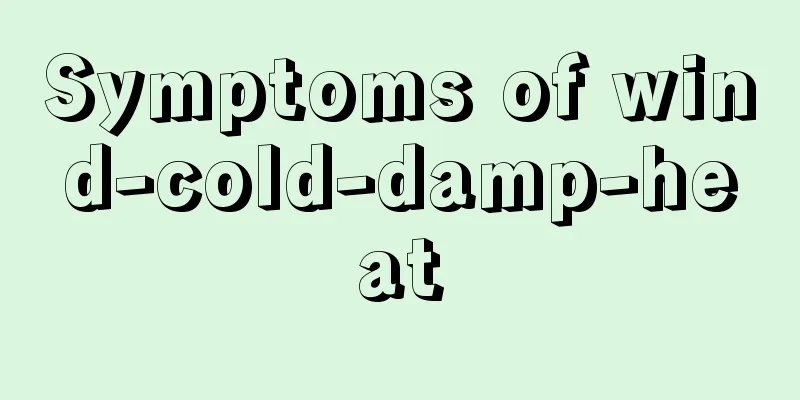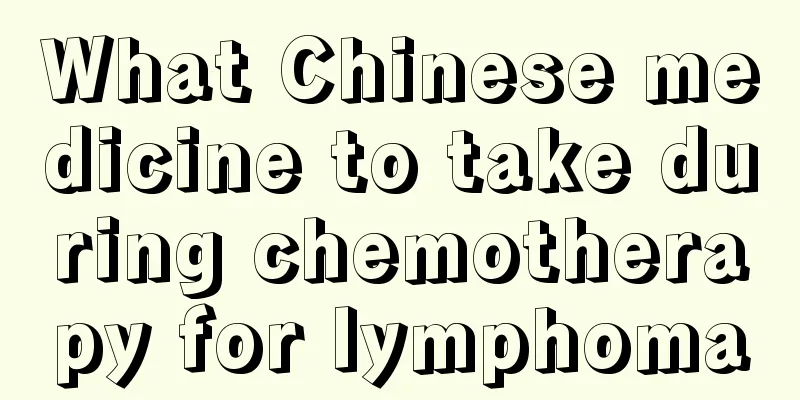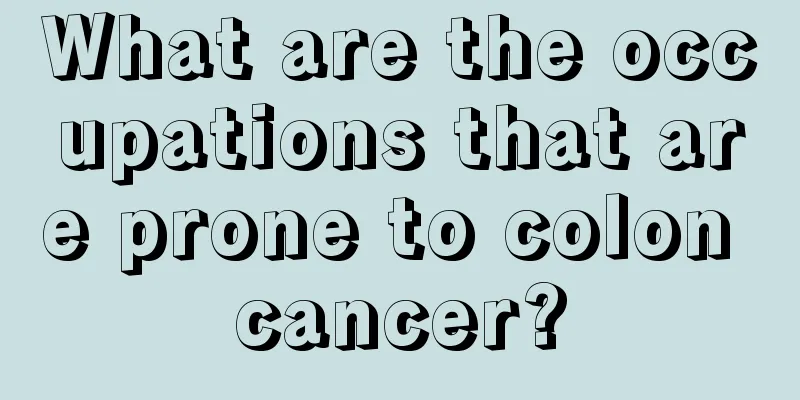Symptoms of wind-cold-damp-heat

|
Wind-cold, damp-heat are often heard in traditional Chinese medicine, but not everyone understands the symptoms of wind-cold, damp-heat. First of all, different types of wind-cold, damp-heat have different growth manifestations, but the most common is cough. This cough is different from the ordinary one. When you cough, you will be accompanied by sputum, and most of the sputum spit out is very thin and white. You will often feel a little cold in your body, as if you have been invaded by cold air and feel particularly cold. Lung cold and lung heat are mostly real syndromes. Lung cold can be divided into: wind-cold restraining the lungs and cold evil invading the lungs; lung heat can also be divided into: wind-heat invading the lungs. Lung cold can be divided into: wind, cold and heat evil blocking the lungs and dryness evil invading the lungs. The specific clinical manifestations, syndrome analysis and syndrome differentiation are as follows: (I) Wind-cold binding the lungs [Clinical manifestations] This syndrome is characterized by cough and thin white sputum as the main symptoms, accompanied by fever, slight aversion to wind and cold, no sweating, thin white tongue coating, and floating and tight pulse, which are symptoms of wind-cold syndrome. [Symptom analysis] The cause of this syndrome is that wind-cold attacks the surface and then invades the lungs. Wind-cold binds the lungs, and body fluids turn into phlegm when they encounter cold. The airways are blocked, causing the lungs to fail to descend, resulting in coughing with thin white phlegm; wind-cold binds the exterior, so there are also wind-cold exterior symptoms. [Symptom differentiation] Wind-cold binding the lungs and wind-cold exterior syndrome have the same etiology, both are caused by exogenous wind-cold evil qi, but the pathological changes are not exactly the same, so the clinical manifestations and symptoms are different. Wind-cold binds the lungs: The pathogens enter from the exterior, and the focus of the lesion is on the lungs, so cough is the main symptom, with mild exterior symptoms. In wind-cold exterior syndrome, the evil qi is mainly on the surface, so the emphasis is on wind-cold exterior syndrome, with chills and fever as the main symptoms, and mild or no symptoms of wind-cold invading the lungs. (II) Cold evil invading the lungs [Clinical manifestations] The main respiratory symptoms are cough and asthma, thin white sputum, accompanied by signs of real cold, cold body and limbs, pale tongue with white coating, and slow pulse. [Symptom Analysis] This syndrome is characterized by sudden onset of cough, wheezing, and shortness of breath, with obvious signs of cold. When evil cold invades the lungs, the Yang Qi is suppressed and qi reversal causes cough and asthma; when the lungs are not warmed enough, the body becomes cold; when the cold stagnates and qi and blood stagnates, the tongue becomes pale with white coating and the pulse is sluggish and weak. [Symptom differentiation] Evil cold invading the lungs and wind-cold restraining the lungs. The symptoms of cold evil invading the lungs and wind-cold binding the lungs include coughing up thin white sputum. Differences: When cold evil invades the lungs, the symptoms are more severe, with cough and wheezing, accompanied by signs of actual cold; when wind-cold binds the lungs, the symptoms are milder, with symptoms of wind-cold on the surface. In addition, the former has a long course of disease, while the latter has a short course of disease. Differentiation between the syndrome of cold evil invading the lungs and that of fluid stagnation in the lungs: common symptoms include cough and thin white sputum. Differences: Cold evil invades the lungs, with little phlegm; the medical history shows acute onset; the nature of the disease is a positive syndrome. Qin stagnates in the lungs, and the sputum is mostly foamy and watery; the disease has a history of chronic recurrent attacks; the nature of the disease is a syndrome of deficiency of the root and excess of the superficial symptoms. (III) Wind-heat invading the lungs [clinical manifestations] are characterized by lung-heat cough, thick yellow sputum and wind-heat symptoms on the surface. Fever, slight aversion to wind and cold, nasal congestion with thick yellow nasal discharge, dry mouth and sore throat, red tip of tongue with thin yellow coating, and floating and rapid pulse. [Symptom analysis] Wind-heat attacks externally and the lung defense is affected. Wind-heat burns the lungs, causing thick and yellow phlegm, which in turn causes the lungs to lose their ability to clear and purify, and their functions of ascending and descending to become abnormal, resulting in cough, asthma, nasal congestion and turbid nasal discharge; evil invades the lung defense system, causing stagnation of Yang Qi, resulting in symptoms of superficial heat; excessive heat causing damage to body fluids, resulting in dry mouth and sore throat. (IV) Heat evil blocking the lungs [Clinical manifestations] Mainly characterized by cough, asthma and internal heat. Cough, wheezing, thick yellow sputum, symptoms of heat include high fever, thirst, irritability, loose stools, short and dark urine, red tongue with yellow coating, and slippery and rapid pulse. |
<<: Symptoms of head vasospasm
Recommend
How long can a person with kidney disease live on dialysis
The most serious type of kidney disease is uremia...
Can advanced breast cancer be cured?
About 60% of patients with mid-stage breast cance...
Do I need to add water when soaking my feet in white vinegar?
As we all know, white vinegar is not only a must-...
What are the side effects of hyaluronic acid filling the forehead?
Hyaluronic acid is a very popular beauty product,...
What to eat when you have a cold and fever? Eat more of these fruits
When you have a cold or fever, you will lose your...
How to remove the frown lines between eyebrows
The splayed lines are a type of wrinkles. It look...
What to do if your lips get blisters due to inflammation
Some people are prone to blisters on their mouths...
The diet for gallbladder cancer should choose easily digestible food
Gallbladder cancer is a relatively common disease...
Prostate cancer in the elderly is easily overlooked
Mr. Zhao is over 60 years old this year. He has b...
What should I do if my tooth is extracted?
Teeth are very important. You should brush your t...
There are black vertical lines on the nails
Some people's nail surfaces are not smooth an...
How to clean the water purifier filter
It is well known that the filter element largely ...
Black mildew stains on bed sheets can be washed off with this little method
Bed sheets are common household textile products ...
What to do if the cesarean section scar becomes hard
Caesarean section is a surgical procedure that is...
What is the nursing method for lung cancer patients? Summary of 4 basic nursing methods for lung cancer
In the nursing measures for lung cancer patients,...









